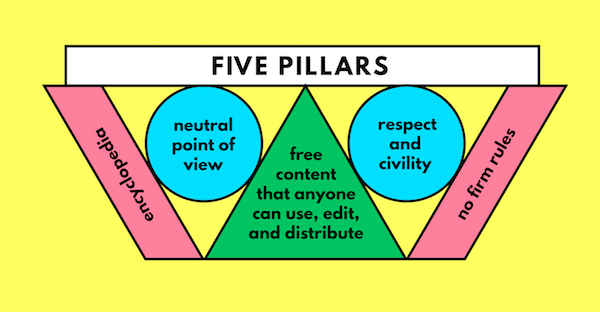Do you need to write a manifesto?
[Updated and expanded November 2021. Previously titled as ’17 reasons you need a manifesto’]
A manifesto is a public declaration of your intent. In other words, it’s you standing up in front of other people and saying, ‘I’m going to do this’. It could be a goal, a list, a set of rules or a new world (I wrote about the four types of manifesto here).
You might choose to write a manifesto for:
- Yourself – this might include a bucket list, your top five values or a big goal you want to achieve.
- Your Business – this might include your business philosophy, your business values or your vision for the future
- Your Community – this might be a political statement, a vision statement for a community organisation or simply a description of the world you want to live in.
17 reasons to write a manifesto
A manifesto is a general all-purpose tool for creating the future and making change happen. It follows that the 17 examples to write a manifesto are merely a good starting point for why you might write your manifesto.
1 Take ‘it’ to a new level
Most of the time we wander through life keeping ourselves busy and doing things. Then, one day, we realise we’re a little stale and want to take things to a new level. This might be to get fitter, build better relationships or grow your business. When you write a manifesto you put a stake in the ground that says ‘this is now the new level that we are playing at’. And it serves as a way to benchmark your progress.
Action: Define the new level or standard that you want to play at.
2 Achieve Fresh Results
Sometimes we want a change of direction in our lives, our businesses and our communities. By stopping, reflecting and writing down your manifesto, you can define the fresh set of results that you want to achieve. This might include a switch in your business from only making money to a purpose-driven business. You can write your manifesto as a purpose statement to make this happen.
Action: Stop and consider what new results you want then write them down in your manifesto.
3 Cause Change
One of the most powerful ways to use a manifesto is to create change. Often people who are unsatisfied with their current situation want to change but don’t know what that change might look like or how to achieve it. Your manifesto can help. Martin Luther King’s I Have a Dream speech is perhaps the best-known example of painting a picture of the change he wanted to see and the world he wanted to live in. Essentially, you’re saying, ‘this is what’s possible’.
Action: What change do you want to see in the world? Write this down so you can share this with others to give yourself a better chance of making it stick.
4 Create the Future
The key to the power of a manifesto is that it is a linguistic tool – a tool we use when we speak. And this is how we create the future. It can be as simple as saying ‘I want this’. For instance, ‘I’m hungry, I’m going to eat.’ At a deeper level, when a marriage celebrant declares a couple to be married, their future is changed. Likewise, when US President John F Kennedy spoke about sending a man to the moon, the world changed from that point onward. He had created the future and less than ten years later after a lot of hard work by a lot of people, Neil Armstrong took that giant leap for mankind.
Action: Write a manifesto to describe the future you would like to create.
5 To Upset the Status Quo
One of the great challenges for improving our world is that we human beings find it easy to settle into a status quo. In other words, we get comfortable and don’t want to change. One way to interrupt this is to write a manifesto and promote the need for change. To some extent, every manifesto or declaration for the future instantly does this. For example, if you’re sitting on the couch with your partner and they suddenly say, ‘I’ve had enough of sitting here, I’m going for a walk’, that has upset your status quo. When you write your manifesto be aware of this impact. Use it to make the difference you want to see in the world.
Action: Define the status quo as you see it. Then create an alternative.
6 End What Doesn’t Work

Sometimes things just don’t work anymore. For instance, your opportunities to grow, learn and be promoted at work begin to stall. When that happens, we need to make a call (a declaration) to end what’s not working. In dance, Yvonne Rainer wanted to end the traditional styles of dancing and move things forward. As a result, Rainer wrote her ‘No Manifesto’ which offer 13 elements of dance that she was no longer going to perform or pursue. By declaring what didn’t work for her, she created an opening for dancers to explore and create in new ways.
Action: What’s not working? Writing it down will force you to be specific.
7 Be Open and Transparent
In some countries, manifestos are part of the political process whereby each party declares what they’re goals are if they are elected. It’s a fairly simple process that leads to openness and transparency. It works the same way in a community or a business – and even for your personal manifesto. When you publish your manifesto, other people can see what you’re setting out to create. And the great opportunity in doing this is that other people may join you in your quest or say, ‘I can help you with that’.
Action: Write and publish your manifesto to make your change process more open and more transparent.
8 Create Potent Branding
A great brand is built on a promise. To create this, you need to define what you stand for. Then your game is to deliver on that stand and promise. A powerful way to do this is to write a manifesto – a brand manifesto of what you stand and what you promise to deliver for your fans, customers and clients. Apple has used this approach with several manifestos, for example, Here’s to the Crazy Ones. It also helps when you promote this in your content creation and social media to attract your cult-like following.
Action: Define your brand as a manifesto so others can buy into it.
9 To be Bold and Audacious
Declaring a manifesto or a big goal is risky because you don’t know how people will respond to it. On the flip side, it’s a bold and audacious move. This is one of the best ways to call yourself to account. JFK’s declaration that the US would send a man to the moon was bold and audacious (especially for a politician) and it was this courage that inspired a nation and encouraged them to rally to the cause.
Action: If you want to step up and be bold and audacious, share your manifesto in public.
10 Be Held to Account – Publicly
Manifestos don’t work when they hide on some folder in your computer or in the bottom drawer of your desk. They’re public documents. And when you publish your intent publicly you are automatically open to being held to account based on what you said you would do. This is part of their power. You will lose this level of influence if you declare things publicly and don’t follow through. Sure, it’s a risk. And it’s also a source of power to have you be in action.
Action: When you write and publish your manifesto, check with yourself to ensure you want to be held to account by others for what you say.
11 Generate Referrals
Most businesses build a strong system for going out into the world to find customers. They advertise, make phone calls and publish content online. That can work. An alternative is to have other people send clients and customers to you – that’s called a referral. One way to achieve this is through your manifesto. By declaring what you stand for, what you promise to deliver and how you help people can elevate your business beyond the mundane such that others actively talk about you and your business. This can lead to referrals.
Action: Take a stand in your business to inspire your customers and by having them talk about you will help generate referrals.
12 Be Called Into Action
What’s the difference between motivation and inspiration? Motivation tends to be a driving force – we drive ourselves forward. But inspiration tends to be a pulling force that compels us to act. This is what we mean by being called into action. It’s like throwing your hat over the wall and being compelled to climb over and grab it. A manifesto that describes a compelling future can have provide this inspiration and pulling power.
Action: Write a manifesto to inspire you into action – focus on what your vision looks like (be specific) and why you want that to come true.
13 Start a Movement
Movements happen when people gather around an idea or a cause. The more clearly you can define this the better and a manifesto is a great way to do this. Martin Luther King’s I Have a Dream speech is a classic example. He wasn’t quite starting a movement and he was surely extending it and expanding it by clearly describing what the end goal would look like. By giving people a clear destination, it makes it easier for them to work out how to reach that destination.
Action: When starting a movement paint the picture of what the world could like – this gives people the why or reason for joining in.
14 Inspire Community
The Wikipedia Five Pillars manifesto is a very simple five-sentence set of rules. It describes not only what they do (an online encyclopedia) but also how they will do it. Importantly, they also say how their community of editors will approach the task (with respect and civility). These are important things in creating community – defining what you want, how you will do it and most importantly how your community will interact with each other.
Action: Define the rules for your community in your manifesto. Tell us what you’re setting out to achieve and how to go about it.
15 Generate Content
In my work with business experts and thought leaders, I help them create content and generate unique IP (Intellectual Property) so they can earn money from what they know. The primary tool I use is a rule-based manifesto. One of the best examples of this is Stephen Covey’s best selling book, The Seven Habits of Highly Effective People. Covey shares seven powerful principles or habits to follow to be highly effective in your life. From these seven rules, he was able to write a book and ultimately this became the foundation for worldwide training at Franklin Covey. In other words, in writing his manifesto he was able to generate content and create a global business.
Action: Write your manifesto as the framework for more content, eg a book or a training program.
16 Win with Social Media
There are little billions of pieces of social media content published every single day. How do you stand out in that flood of content? Given most of what is published on social media is the equivalent of small talk about cats, hair, the weather… One approach to have you show up is to take a stand about something that is important to you and start the conversation about that. Not everyone will be interested, not everyone will like it but you might just attract an audience or achieve your goal.
Action: Use your manifesto as the backbone for your conversations on social media to show what you stand for.
17 Bring Ideas to Life
In his best selling book, Permission Marketing, Seth Godin wrote ‘everything starts with a manifesto’. More specifically, every idea is a manifesto. It’s an idea for what is possible in life. But once we have an idea or a startling thought, what do we do with it? When you write a manifesto you document your idea in a way that you can share it with others – it brings your idea to life. And especially when you write it down, you can bring your idea to life without you having to be there to fuel every conversation.
Action: Write your ideas down to share them with more people.
More on how to write a manifesto
- Examples – If you want examples of manifestos I have collected over 250 on the website: 1000manifestos.com
Are there any others you can think of? Which of these reasons call to you? If you created a manifesto, what would it say?





